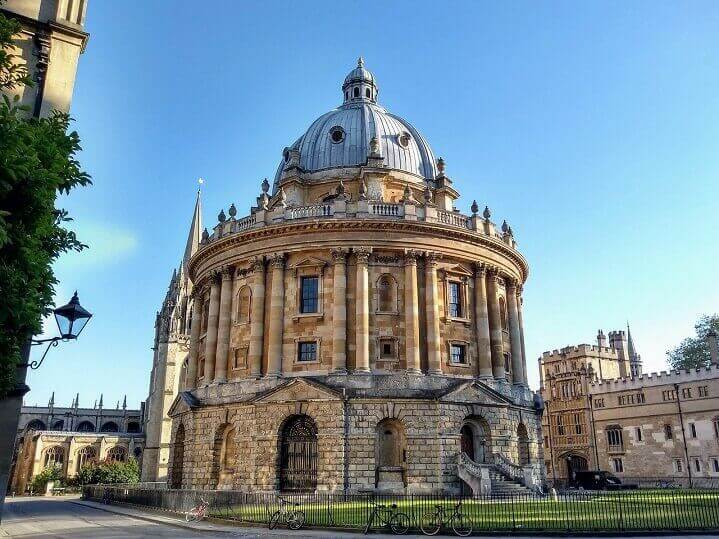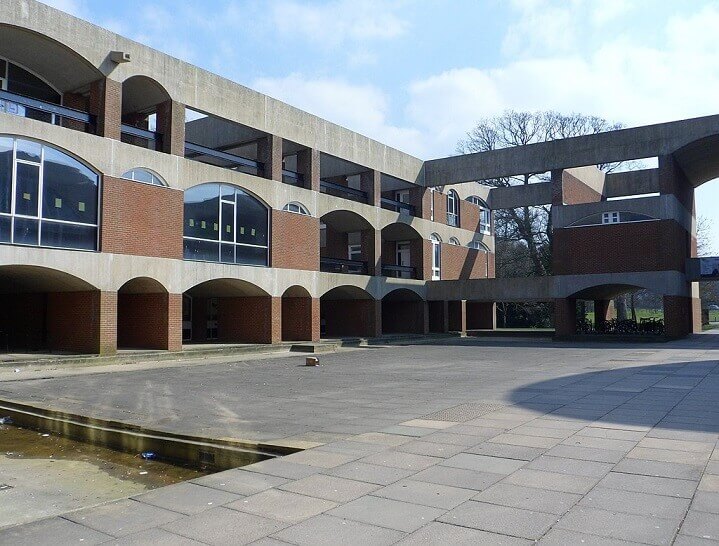Types and groups of universities in the UK
What is the difference between a red brick university and an Oxbridge college?
As you research “higher education in the UK,” you will find terms that are not exactly clear what they mean. This blog aims to explain the types of UK universities in more detail so that you know which university will suit your needs best!
The UK offers a variety of different types of universities to students, each with its unique character. From small colleges to large research-led institutions, prospective students have plenty of options for deciding what type is best for them. If you are looking for UK universities that offer online courses, this page has an up to date list.
A simple rule to categorise types of universities in the UK is by age-
- Ancient (pre-1800),
- Red Brick (1800–1960)
- Plate Glass (1960-1992)
- Post-1992 (1992 – present)
Below we have listed some key groups that might come up while looking into UK higher education. Please note: some universities can be in more than one group.
Ancient universities

The Ancient universities are a group of universities in the UK and Ireland. These were founded during or before the medieval period and typically enjoy “old” status as a result.
The ancient universities in England, Scotland and Ireland are all world-renowned for their excellence. However, some less notable differences make these institutions unique.
The ancient universities are different from other universities in that they award undergraduates with a Magister Artium/Master of Arts (MA). These undergraduate qualifications are known as the Oxbridge MA, Trinity MA (Dublin), or the Scottish MA.
1096 University of Oxford
1209 University of Cambridge
1413 University of St Andrews
1451 University of Glasgow
1495 University of Aberdeen
1582 University of Edinburgh
1592 University of Dublin
Russell Group universities
The Russell Group of universities represents the interests of its current 24 leading UK research university members. The group initially started with 17 university members and, over the years, has grown to represent 24 universities with a focus on research and excellence.
Russell Group universities are sometimes labelled the UK ivy league. This is because they produce some of the best graduates research in the country. They also have some of the leading UK academics available to students, making them one of the most popular options for higher education in the UK.
The Russel group aims to
“help ensure that our universities have the optimum conditions in which to flourish and continue to make social, economic and cultural impacts through their world-leading research and teaching.”
University of Birmingham
University of Bristol
University of Cambridge
Cardiff University
Durham University
University of Edinburgh
University of Exeter
University of Glasgow
Imperial College London
King’s College London
University of Leeds
University of Liverpool
London School of Economics and Political Science
University of Manchester
Newcastle University
University of Nottingham
University of Oxford
Queen Mary University of London
Queen’s University Belfast
University of Sheffield
University of Southampton
University College London
University of Warwick
University of York
Red brick or civic universities
The red brick universities was a group of 9 British universities established in the late 19th and early 20th centuries. The term denotes the civic universities founded by local industrialists and business people; these were often created to promote social mobility and lessen class distinctions.
During the 1960s, the number of universities in the UK increased as polytechnics were reclassified as Universities.
The nine remaining original redbrick/ civic universities.
1900 University of Birmingham
1903 University of Liverpool
1903 University of Manchester
1904 University of Leeds
1905 University of Sheffield
1909 University of Bristol
1926 University of Reading
1948 University of Nottingham
1963 Newcastle University
Plate Glass universities
The original plate glass universities were seven universities created in the 60s’ before the famous Robins report- see below. The motivation was to bring higher education to large population areas where there were no universities.
Up to this time, universities were named after the town or city where they were located. But these new universities were named after the county they are located. The name plate glass comes from the modern architecture of the time that used lots of large windows.
1963 University of East Anglia
1964 University of Essex
1965 University of Kent
1964 University of Lancaster (now known as Lancaster University)
1961 University of Sussex
1965 University of Warwick
1963 University of York
Other Plate Glass universities
In 1963 the Robins’ report, led by Sir Henry Robins, recommended that the UK should have a greater number of universities. Colleges of advanced technology converted to universities thought out the 1960s.
The Robins principle guided these new universities.
“University should be available to all who were qualified for them by ability and attainment.”
1966 Aston University
1966 University of Bath
1966 University of Bradford
1966 Brunel University
1983 University of Buckingham
1966 City University, London
1966 Heriot-Watt University
1962 Keele University
1966 Loughborough University
1963 Newcastle University
1969 Open University
1967 University of Salford
1969 University of Dundee
1967 University of Stirling
1964 University of Strathclyde
1966 University of Surrey
1968 New University of Ulster
New universities or Post 92 universities
The Further and Higher Education Act 1992 created many new universities. The goal was to remove the distinction between universities and colleges.
Initially, 33 polytechnic colleges became universities, sometimes referred to as metropolitan universities or new universities but most commonly known as Post 92. Since 1992 the original 33 have been joined by a further 45 universities that were not previously polytechnic colleges.
Anglia Ruskin University
Arden University
Bath Spa University
Birmingham City University
Bishop Grosseteste University
Bournemouth University
BPP University
Buckinghamshire New University
Canterbury Christ Church University
Cardiff Metropolitan University
Coventry University
De Montfort University
Edge Hill University
Edinburgh Napier University
Falmouth University
Glasgow Caledonian University
Glyndŵr University
Harper Adams University
Kingston University
Leeds Beckett University
Leeds Trinity University
Liverpool Hope University
Liverpool John Moores University
London Metropolitan University
London South Bank University
Manchester Metropolitan University
Middlesex University
Newman University
Northumbria University
Norwich University of the Arts
Nottingham Trent University
Oxford Brookes University
Queen Margaret University
Regent’s University London
Royal Agricultural University
Sheffield Hallam University
Solent University
St Mary’s University, Twickenham
Staffordshire University
Teesside University
The Arts University Bournemouth
The Robert Gordon University
University College Birmingham
University for the Creative Arts
University of Abertay Dundee
University of Bedfordshire
University of Bolton
University of Brighton
University of Central Lancashire
University of Chester
University of Chichester
University of Cumbria
University of Derby
University of East London
University of Gloucestershire
University of Greenwich
University of Hertfordshire
University of Huddersfield
University of Law
University of Lincoln
University of Northampton
University of Plymouth
University of Portsmouth
University of Roehampton
University of South Wales
University of St Mark & St John
University of Suffolk
University of Sunderland
University of the Arts London
University of the Highlands and Islands
University of the West of England
University of the West of Scotland
University of West London
University of Westminster
University of Winchester
University of Wolverhampton
University of Worcester
York St John University
Unique UK universities
A few institutions don’t easily fit into the above types of UK universities, such as the Royal College of Art and the Open University. From being 100% online to only offering postgraduate courses.
University of Buckingham – Independent university
Open University – 100% Online courses
Cranfield University – Postgraduate courses only
Royal College of Art – Postgraduate courses only
University of the Highlands and Islands – For degrees offered by local colleges in Scotland
Oxbridge
Oxbridge is not a university at all. Instead, it is a word for combining the University of Oxford and the University of Cambridge. Oxbridge describes the characteristics of these institutions and the people who received an education at or have similar characteristics.
University of London colleges
“All universities are different, but some are more different than others. The University of London is the most different of them all.”
— Negley Harte, Historian
The University of London is a federation of some of the most respected and oldest UK universities. The University of London consists of 17 colleges, each with its independent teaching and research.
When a student joins one of the London colleges, they also become a student at the University of London.
Birkbeck, University of London (BBK)
City, University of London (CIT)
Courtauld Institute of Art
Goldsmiths, University of London (GUL)
Institute of Cancer Research (ICR)
King’s College London (KCL)
London Business School (LBS)
London School of Hygiene & Tropical Medicine (LSHTM)
Queen Mary University of London (QMUL)
Royal Academy of Music (RAM)
Royal Central School of Speech and Drama (RCSSD)
Royal Holloway, University of London (RHUL)
Royal Veterinary College (RVC)
School of Oriental and African Studies (SOAS)
St George’s, University of London (SGUL)
The London School of Economics and Political Science (LSE)
University College London (UCL)
University Alliance Group
Members of the University Alliance Group have come together for a common goal. This group has created a collaborative environment to work together to create a more significant impact on society and share their resources.
The membership is made up of technical and professional universities. It has a mission to drive growth and innovation. They do this by teaching, researching, entrepreneurship and developing links with business and industry.
Anglia Ruskin University
Birmingham City University
Coventry University
Kingston University
Leeds Beckett University
Oxford Brookes University
Teesside University
University of Brighton
University of Greenwich
University of Hertfordshire
University of South Wales
University of the West of England
What to look for in a university
The UK has many different types of universities, ranging from the most prestigious to those that are more niche.
When looking at universities, you should look at the bigger picture and consider other factors such as:
- What industry is this university connected to?
- How can they help me get a job after graduation, or what type of research opportunities are available within that field for qualified students studying there?
- Are classes taught by industry professionals who have valuable expertise outside of academia?
These points may have a much more significant impact on your future career or personal goals than how old or prestigious an institution is.
To help your search, we have compiled a complete list of UK universities that provide online courses. These range from short courses all the way up to a 100% online Master’s degree.


